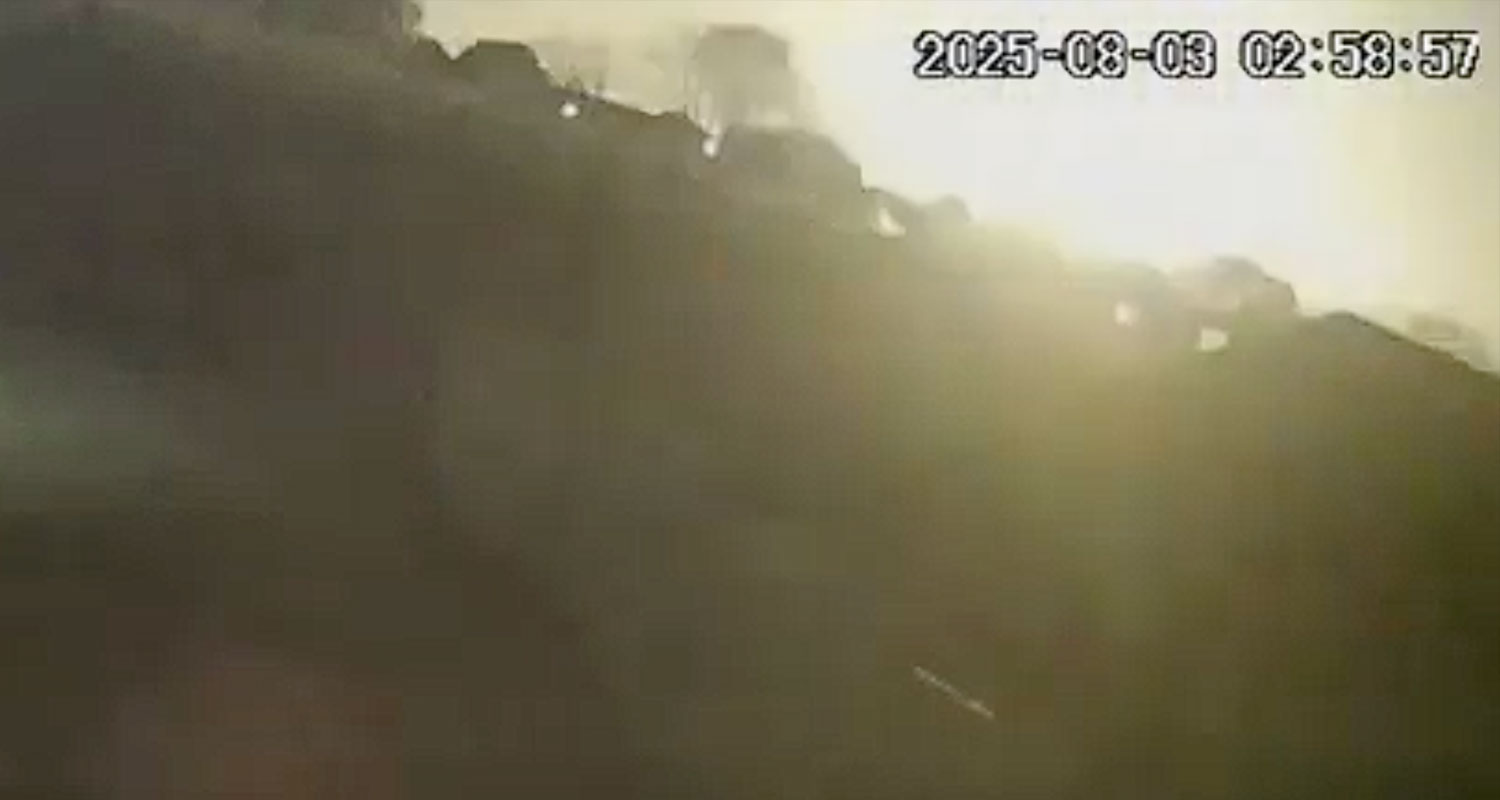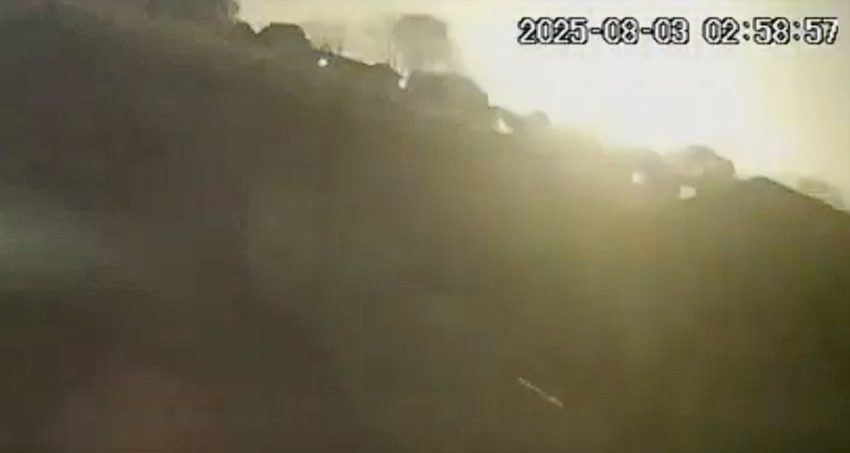
Residents in parts of the Free State have reported a large, fiery meteor streaking across the sky in the early hours of Sunday morning.
Video footage from home CCTV cameras in Bothaville, Balkfontein and Kommandodrif – all in the northern Free State – show the object emitting three bright flashes before disappearing from the night sky at around 2:58am.
One video was taken from as far east as Fochville in south-western Gauteng, some 200km away from the main sightings.
“There was a fireball on Sunday night and we are still working out the path,” said Prof Roger Gibson at the School of Geosciences at Wits University.
“It disappeared somewhere over southern Botswana and we are still trying to figure out exactly where. Once we have that, we can predict if any pieces of the meteoroid survived and where they may have landed. No meteorite fragments have been recovered yet.”
Details of the object are scant, but video footage from locations almost 200km apart suggest it was large.
According to Gibson, it is likely the object’s diameter was several metres and, given that it was visible for around 10s, it entered Earth’s atmosphere a relatively low angle. Although no definitive calculations have been made yet, Gibson estimates the meteoroid entered the atmosphere at a speed of about 20km/s (72 000km/h).
Gibson said additional reports and video footage suggest the object travelled more than 200km, with current estimates suggesting its trajectory spanned 500km or more.
Fragments
“We have videos from Limpopo all the way thorough to Gauteng, down into the Free State, North West and even Botswana. This is quite normal and people typically assume the object is very close to them when in fact this is well above the surface of the Earth, so it can be seen from a long way away,” said Gibson.
Like the meteorite that fell into the Indian Ocean over St Francis Bay in the Eastern Cape last September, teams from Wits and other universities will begin searching for fragments once the object’s path has been established.
Read: Eastern Cape meteorite likely a rare achondrite
The chemical composition of meteor fragments helps scientists identify the region of space the meteor likely came from. The Eastern Cape object, for example, was identified as a rare achondrite originating from 4 Vesta, an area of the main asteroid belt in orbit between Mars and Jupiter. It was eventually named Nqweba, the new name for Kirkwood, where fragments were found.
Given the time of year and the brightness of the Free State object, there is a strong possibility that the yet to be named meteor is a Perseid. According to space.com, the Perseid meteor shower occurs yearly as Earth barrels through a trail of ancient debris shed by a comet named 109P/Swift-Tuttle.
Meteorite
Bothaville
Free State
South Africa
3 August 2025 pic.twitter.com/ykFOJaI7y6— SA911 (@Zulu72944051488) August 4, 2025
These cometary fragments are typically no larger than a grain of sand when they collide with Earth’s atmosphere at speeds of up to 59km/s. The resulting friction swiftly vaporises the debris, creating the bright flashes observed as “shooting stars”.
“Perseid meteors are known for the long wakes that they leave behind as they blaze through the sky. The shower is also famous for producing dramatic fireballs — unusually bright meteors that can outshine the brightest planets,” said space.com.
Perseids are best viewed from the northern hemisphere. Overlapping but minor meteor showers better seen from the southern hemisphere are the Southern Delta Aquarius and the Alpha Capricornids. The latter produces fewer meteors but is famous for fireballs like the one emitted by Sunday’s bolide over the Free State.
The possibility that the Free State meteor does not belong to any of these cyclical astronomical events remains open and details will only be confirmed once fragments have been collected, analysed and identified.
From my sister in law Fochville pic.twitter.com/uNOAkRu5ro
— Sunny Loft (@d421d766a2f74fe) August 5, 2025
“As scientists, we are going to try and study the event and see if it was picked up by any instrument sensors like the infrasound station at Boshoff near Kimberley. The success rate of finding fragments is around 20%. If any pieces are found, they are regarded as protected heritage items and must be handed to authorities for further research,” said Gibson. – © 2025 NewsCentral Media
Get breaking news from TechCentral on WhatsApp. Sign up here.

